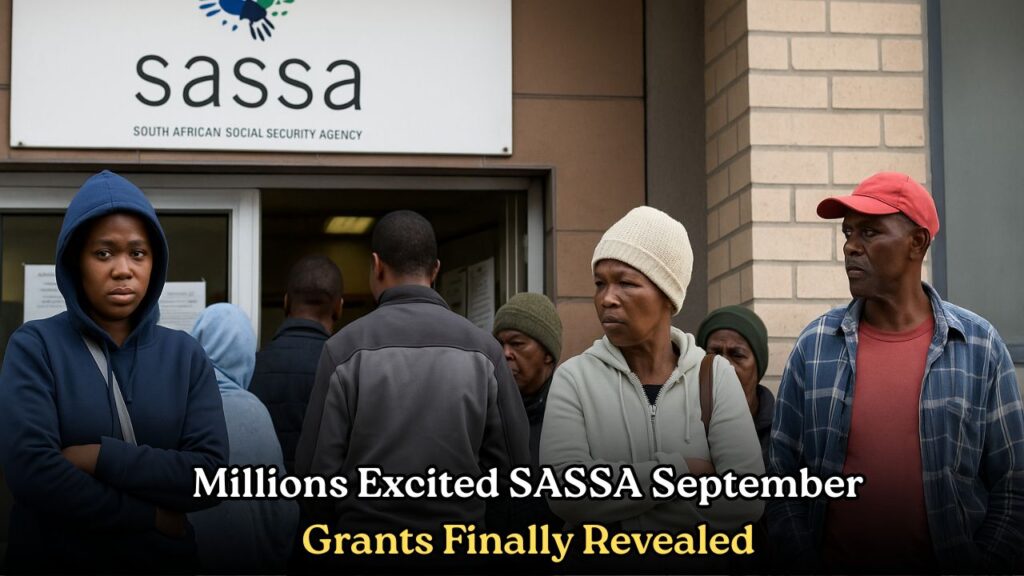SASSA Grant Increase: South Africans welcome the news of the latest SASSA grant increase, set to be implemented in September 2025. The adjustment promises to uplift many lives, with payments of R2,315, R560, and R1,250 announced. This significant change in social assistance aims to provide better support for those relying on these essential services. SASSA, the South African Social Security Agency, plays a crucial role in ensuring financial aid reaches the most vulnerable citizens, and this increase is a step towards addressing the rising cost of living. As the country navigates economic challenges, understanding the impact of these changes is vital for beneficiaries and the public alike.

Understanding the September 2025 SASSA Grant Adjustments
In September 2025, millions of South Africans relying on social grants will see a noticeable change in their monthly benefits. The SASSA grant increase, announced recently, includes payments adjusted to R2,315, R560, and R1,250. These modifications reflect the government’s ongoing efforts to support vulnerable groups amid economic pressures. This move is particularly crucial as inflation and living costs continue to climb, impacting everyday expenses from groceries to transportation. By increasing these grants, SASSA aims to provide a buffer for citizens who depend heavily on financial aid, ensuring they can meet basic needs and maintain a reasonable quality of life. The grant adjustments cater to various categories, including the elderly, children, and those with disabilities, each receiving tailored amounts to address specific needs. As these changes roll out, beneficiaries are encouraged to plan their finances accordingly and stay informed about how these increases will affect their monthly budgeting.
Impact of SASSA Grant Increase on South African Households
The introduction of increased SASSA grants in September 2025 is poised to have a significant impact on households across South Africa. The rise in grant amounts aims to alleviate the financial burden on families that rely on this assistance for basic living expenses. With the cost of essentials like food, utilities, and healthcare on the rise, these increments come at a critical time. For many, the additional funds will provide much-needed relief, helping to cover gaps that were previously challenging to manage. The ripple effects of this increase extend beyond individual households, potentially boosting local economies as beneficiaries spend more within their communities. This, in turn, might lead to increased demand for goods and services, offering a small but meaningful stimulus to local businesses. However, while the grant increase is a positive step forward, it also highlights the ongoing need for comprehensive economic reforms to address broader systemic issues affecting poverty and unemployment in the nation.
How the R2,315, R560, and R1,250 Payments Are Allocated
The new SASSA grant payments of R2,315, R560, and R1,250 are strategically allocated to address different needs within the community. The R2,315 payment is targeted at the elderly and pensioners, ensuring they have adequate resources to cover essential living costs and medical expenses. This group is particularly vulnerable to inflation, making this increase vital for their wellbeing. The R560 payment is primarily focused on child support grants, aimed at assisting families in providing for their children’s education, nutrition, and healthcare. This support is crucial in fostering a healthier, more educated future generation. Lastly, the R1,250 payment is designated for disability grants, offering financial assistance to those who face barriers in employment due to their disabilities. These allocations reflect a targeted approach to social welfare, ensuring that each demographic receives support aligned with their specific needs. Beneficiaries are advised to manage their increased funds wisely, with a focus on sustainable financial planning to maximize the benefits of these adjustments.
Long-Term Benefits of the SASSA Grant Increase
While the immediate relief provided by the September 2025 SASSA grant increase is evident, its long-term benefits could be even more profound. By injecting more funds into the hands of the vulnerable population, the government is indirectly investing in the country’s socio-economic fabric. Over time, improved financial security among grant recipients can lead to better educational outcomes for children, as families are able to afford school fees and related expenses. Additionally, healthier diets and access to medical care can improve overall health outcomes, reducing the strain on public health systems. Economically, the increased spending power of beneficiaries can stimulate demand for local products and services, potentially creating jobs and fostering small business growth. However, to sustain these benefits, it’s crucial for ongoing government support and policy adjustments to adapt to changing economic conditions. Ensuring that the grant system remains responsive and flexible will be key to maximizing its impact on South Africa’s development landscape.




